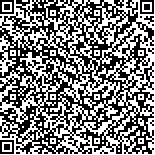刘莲莲,张芳权,曾西,等.脑卒中真性球麻痹患者营养状况及影响因素分析[J].中华物理医学与康复杂志,2023,45(12):1094-1098
扫码阅读全文

|
| 脑卒中真性球麻痹患者营养状况及影响因素分析 |
|
| |
| DOI:10.3760/cma.j.issn.0254-1424.2023.12.006 |
| 中文关键词: 脑卒中 真性球麻痹 营养不良 危险因素 |
| 英文关键词: Stroke Bulbar palsy Malnutrition Risk factors |
| 基金项目: |
|
| 摘要点击次数: 3651 |
| 全文下载次数: 3990 |
| 中文摘要: |
| 目的 探讨我院康复医学科收治的脑卒中真性球麻痹患者营养不良的发生率及相关影响因素,并构建营养不良风险预测模型。 方法 采用回顾性调查方法,共纳入符合入选标准的脑卒中患者325例。对比入选脑卒中患者及其中真性球麻痹患者的营养状况;对脑卒中真性球麻痹患者营养不良的危险因素进行单因素分析和多因素Logistic回归分析,建立真性球麻痹患者营养不良风险预测模型并绘制受试者工作特征曲线(ROC)。 结果 与入选脑卒中患者整体比较,脑卒中真性球麻痹患者其营养不良发生率明显升高(66.3% vs 52.0%,P<0.05)。营养正常与营养不良的真性球麻痹患者在年龄、美国国立卫生研究院卒中量表(NIHSS)评分、血红蛋白水平、日常生活活动能力(ADL)、肺部感染方面组间差异均具有统计学意义(P<0.05)。通过多因素Logistic回归分析发现肺部感染、高NIHSS评分、低血红蛋白水平为脑卒中真性球麻痹患者营养不良的独立危险因素。基于上述3项指标建立脑卒中真性球麻痹患者营养不良的风险预测模型,发现该模型的ROC曲线下面积(AUC)为0.860(95%CI:0.778-0.943,P<0.05),灵敏度为0.789,特异度为0.828,Hosmer-Lemeshow检验提示模型校准良好,表明该模型具有较好的预测价值。 结论 在康复医学科治疗的脑卒中真性球麻痹患者其营养不良发生率较高。肺部感染、高NIHSS评分、低血红蛋白水平是脑卒中真性球麻痹患者营养不良的独立危险因素,医护人员应重视真性球麻痹患者的营养状况及相关危险因素管理。 |
| 英文摘要: |
| Objective To explore the prevalence of malnutrition among stroke survivors with bulbar palsy and the risk factors involved, and to construct a prediction model. Methods This was a retrospective study of 325 stroke survivors. The nutritional status of those with and without bulbar palsy was compared. Univariate and multivariate logistic regressions were evaluated to highlight risk factors. A risk prediction model was constructed and a receiver operating characteristics (ROC) curve was drawn. Results The prevalence of malnutrition among the stroke survivors with bulbar palsy was 66%, significantly greater than among all patients (52%). Among the stroke survivors with bulbar palsy there were significant differences between the normal nutrition group and the malnutrition group in terms of age, National Institutes of Health Stroke Scale (NIHSS) scores, hemoglobin, daily activities and pulmonary infection. The multivariate logistic regressions showed that pulmonary infection, a higher NIHSS score and lower hemoglobin were independent risk factors predicting malnutrition among stroke survivors with bulbar palsy. A risk prediction model for malnutrition was constructed based on the 3 major indicators and the area under the ROC curve was 0.86, with sensitivity of 0.79 and specificity of 0.83. A Hosmer-Lemeshow test indicated that the model was well calibrated, indicating that it would have good predictive value. Conclusions Malnutrition is prevalent among stroke survivors with bulbar palsy. Pulmonary infection, a high NIHSS score and low hemoglobin are independent risk factors. They should be treated as important by medical staff. |
|
查看全文
查看/发表评论 下载PDF阅读器 |
| 关闭 |
|
|
|